Equestrian Surfaces – A Guide is a comprehensive handbook produced by the Swedish Equestrian Federation. It breaks down everything you need to know about horse arena footing. In a series of posts, we will cover each chapter. Next up, chapter 4: Arenas, their Function and Properties.
How a riding surface functions must be characterised based on how it responds to the load from the horse. It is important to find a common set of terms that define these effects.
THE CHAPTER IN BRIEF
How do you characterise a riding surface? It is the properties of a surface that affect the horse. To characterise a surface we therefore need to define terms to describe these key functional properties. With support from the FEI/World Horse Welfare the equestrian surface scientists in Sweden together with colleagues in he US, the Netherlands, Switzerland and the United Kingdom, have developed a “profile” to characterise riding surfaces. The aim of this profile is to offer all riders definitions that describe an arena, where the profile can also be evaluated objectively by mechanical testing (see chapter 12 ”Functional testing”). Try and evaluate your own arena using these criteria!
- Is the arena hard and rigid or does it offer shock absorption? This is determined by the: Impact firmness and cushioning
- Does the surface offer the horse good traction and grip, but also help to absorb the braking force when the hoof first hits the ground? This is determined by the: Grip and impact firmness
- Does the whole arena offer the same properties?this is determined by the: Uniformity
Arena surfaces used in equestrian sports are mainly composed of sand and sand mixes. (Other types of arenas, such as grass arenas and those based on woodchips, rubber, dirt, etc are not included in this first edition of the guide). It is important to understand that especially sand based surfaces behave differently depending on what forces or loads they are subjected to and at what speed they are loaded. Imagine a mouse and a horse moving across the same arena – they would have very different opinions on how it feels!
This is because a surface can feel stiff for a lightweight individual while it feels softer to someone who is heavier. This is because the lighter load does not deform the surface. This also means that what a rider feels when walking across an arena is likely different to what the horse feels.
When a horse lands on a surface, for example, after jumping a fence, the impact with the surface is at high speed and there is a large amount of weight loading the limb. Therefore the horse will “feel” characteristics deeper down in the surface compared to a human who tries to “test” the surface by jumping up and down in the same spot. For humans with their lighter weight it is easier to determine characteristics of the top layer.
This chapter describes five criteria to describe the properties that characterize a riding surface:
IMPACT FIRMNESS
Influences the mechanical shock experienced by the horse when the hoof first hits the ground.
This relates to the hardness of the top layer of the surface. How firm/loose is it? How high is the impact shock when the hoof lands, and how much can the hoof rotate into the top layer? Tarmac and concrete have maximal impact firmness.
Examples: If you put a layer of a few centimetres of sand on top of the tarmac,the impact firmness would be considerably reduced, while the surface would still provide solid support for the hoof. Another example is if wooden boards were laid on top of wet clay to protect the horses’ feet from sinking into the soft earth, the impact firmness of the wood would be greater than that of the sand on top of tarmac, but the surface would still give under the horse.
CUSHIONING
Cushioning describes how the surface is able to dampen and reduce the maximum force,when the horse puts its full weight on the legduring the support phase.
Cushioning (or force reduction) refers to how all the layers of the riding surface react to the force applied when it is loaded from above by the weight of the horse. A surface that provides good cushioning can reduce the stress and strain on the horse’s leg when the hoof is in full contact with the ground.
A surface with less cushioning is described as stiff or hard. Obviously there is also an association between the cushioning effect and impact firmness. When the hoof leaves an imprint on the surface due to compaction by the weight of the horse, this also provides shock absorption. It is nonetheless important to understand that cushioning is not only dependent on the hardness of the superficial top layer. A minor response in the lower layers can provide good shock absorption for the horse.
With riding arenas it is common to achieve cushioning by working with materials that deform under the hoof (by compaction). Decompaction can be achieved naturally with an “elastic” material (a moist fibre sand, a springy rubber layer beneath the surface), or by maintenance (harrowing). So cushioning be achieved either by a footing with a loose surface, or with an elastic footing. When we discuss cushioning we only mean the cushioning ability. The difference between an elastic surface and deep loose surface is discussed in the next parameter.
Example: A compacted surface with no cushioning can help the horse perform very well because it provides solid support for the hoof, but the horse may also be injured much more quickly because such a surface offers very little shock absorption and the loads on the limb may become too high. On the contrary, a deep surface deforms as the hoof pushes against it,rather than resisting the push the push would provide too much cushioning. To perform well on this surface the horse would need to work harder, so may fatigue more quickly.
An example of a surface that has cushioning without elasticity is a sandy beach with dry, deep sand.
RESPONSIVENESS
How active or springy the surface feels to the horse.
Responsiveness in a surface can be likened to using a trampoline; after the surface has been pushed downwards by the weight of the horse it can spring back and aid the horse in pushing off into the next stride. It gives energy back to the horse. The natural frequency (tuning) of the surface determines the timing of the rebound. If the rebound is well timed to the locomotion to the horse the surface will feel springy or active. The opposite is a “dead” surface. Responsiveness is also influenced by the stiffness of the surface, so it is closely related to cushioning. A very compacted surface may rebound too quickly to return energy to the horse, so it would also feel stiff, and “dead”.
As the horse’s body has a lot of inbuilt elasticity the responsiveness of the surface can be difficult for the rider to judge.
GRIP
Affects how much the horse’s hoof slides during landing, turning and pushing off.
Grip is determined by both surface friction and how well the top layer and the materials beneath interlock and hold the surface together to provide traction. Surface grip is important when the hoof lands, when the horse turns and during propulsion.
The friction on the surface affects the hoof landing. It is important that the hoof can slide somewhat on landing as that helps to absorb the impact. Meanwhile the hoof should not slide too much, as this means the surface is slippery. When the horse pushes off, the materials beneath the surface must withstand the push. The same principle holds on turns. At what angle the hoof lands and the speed of the horse is also important for how much grip the hoof needs and gets.
Achieving the right balance of grip is a challenge for anyone wanting to produce a good riding surface as not too much and not too little is important for injury prevention.
Example: A high grip surface would stop the hoof too quickly, whereas on a slippery surface the hoof would slide too much.
UNIFORMITY AND CONSISTENCY
These properties are concerned with how uniform the surface feels from stride to stride as the horse moves over it. Remember that an arena can look even and yet not be uniform!
Uniformity describes how much the characteristics vary across a whole arena. A surface can be even and look level, but as you ride across it the impact firmness, cushioning and grip change. If these changes are quite small and gradual or readily visible the horse can probably adapt quite well. But if the variations within the arena are greater and more frequent the horse can find it difficult to adapt, and is more likely to trip, or even get injured. Some arena surfaces may also be unlevel in the sense that they are not flat, and are then likely to vary in their properties.
You can read the next chapter on Construction Materials here or read the entire Guide here. And, if you have any questions about your arena footing needs, please contact us.
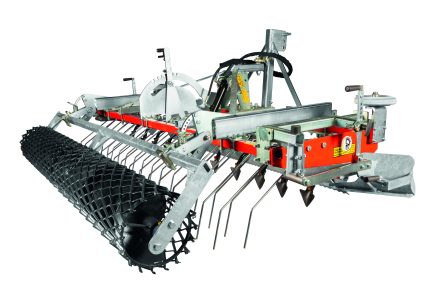
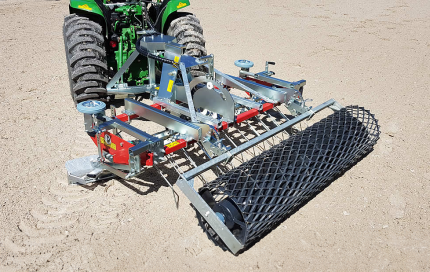
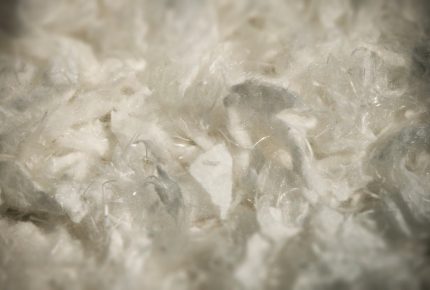
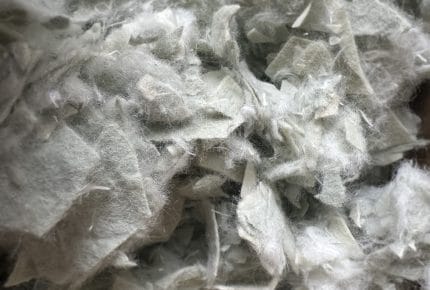
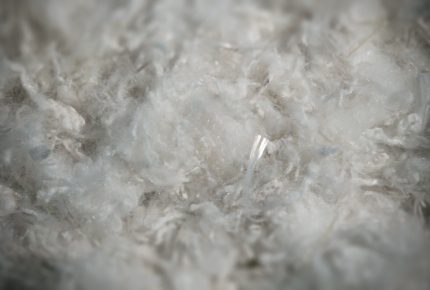
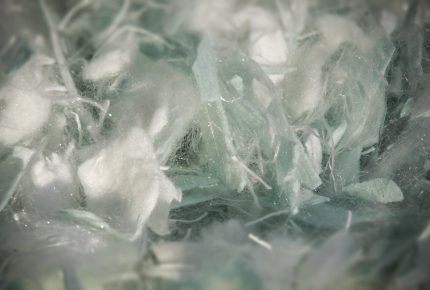
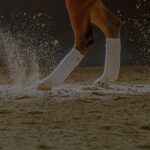 Geotextile Arena Footing
Geotextile Arena Footing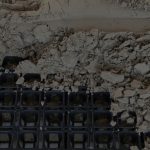 Ground Mats and Grids
Ground Mats and Grids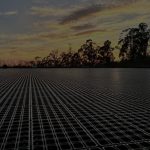 Subsurface Irrigation
Subsurface Irrigation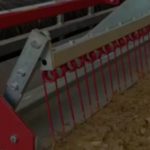 Arena Drags & Groomers
Arena Drags & Groomers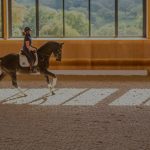 Mirrors and Kickwall
Mirrors and Kickwall Horse Wellness
Horse Wellness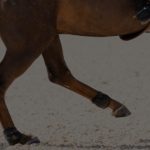 Dust Control
Dust Control